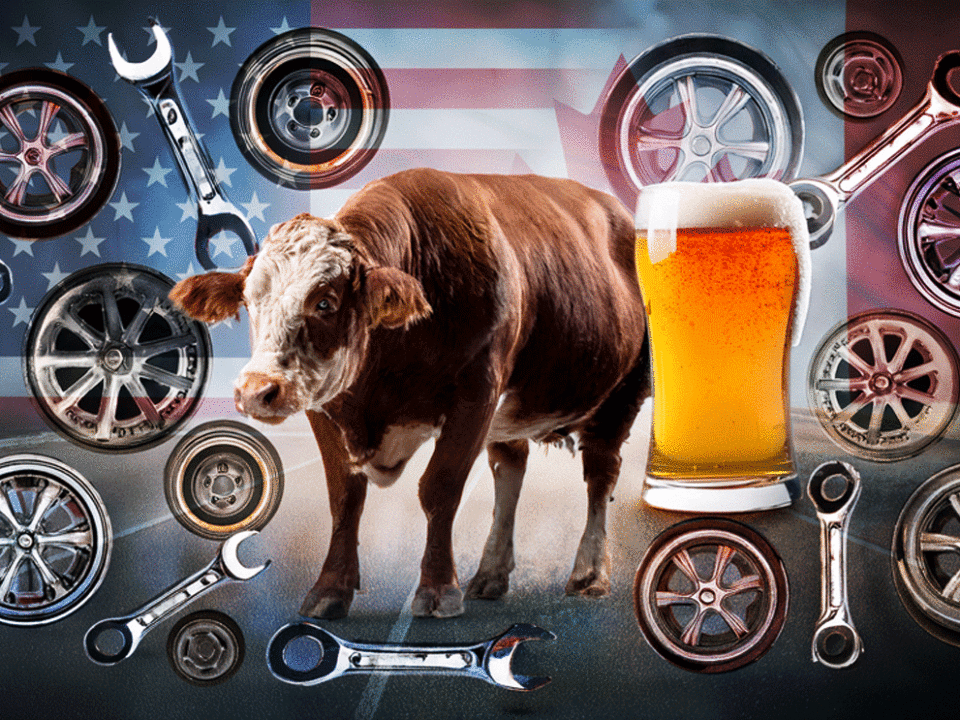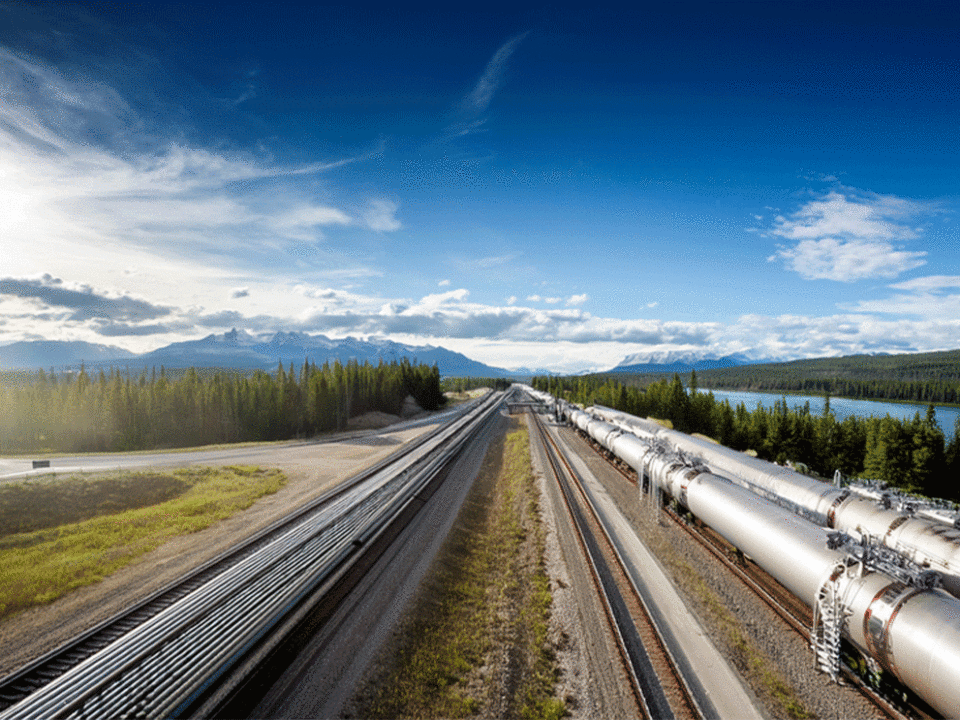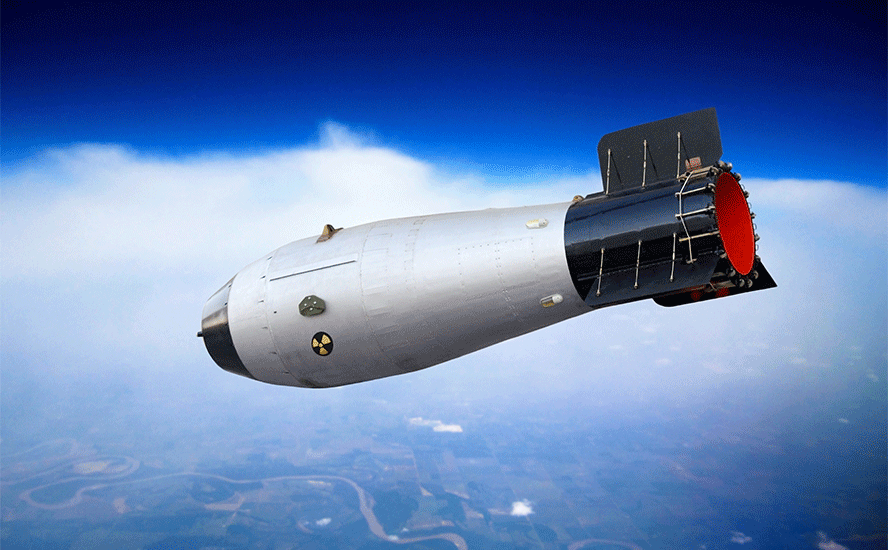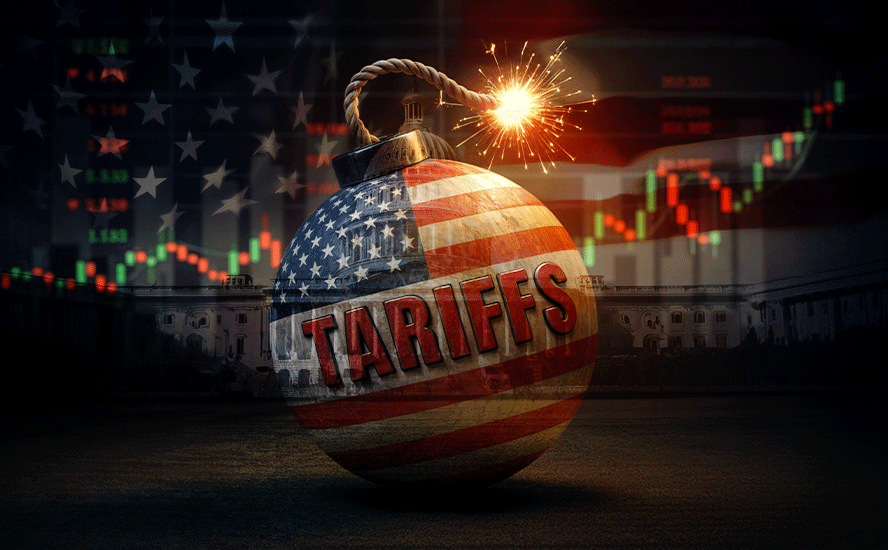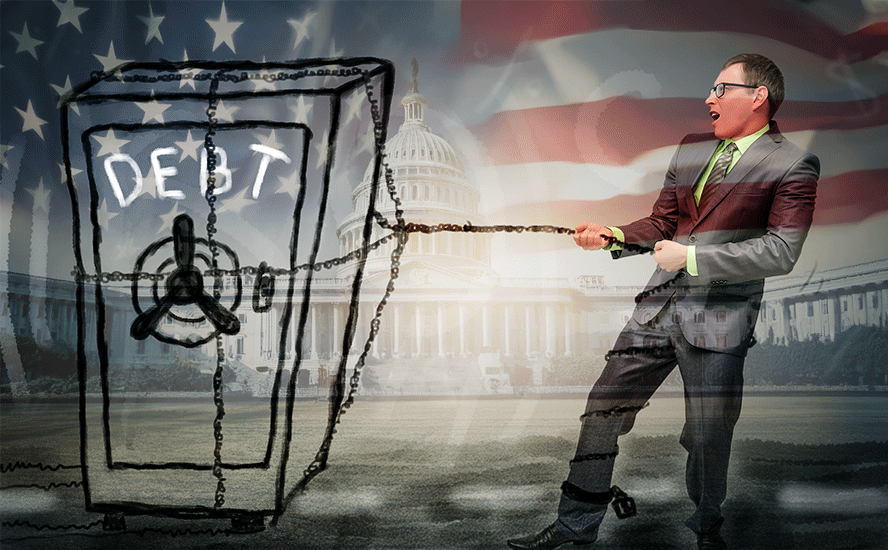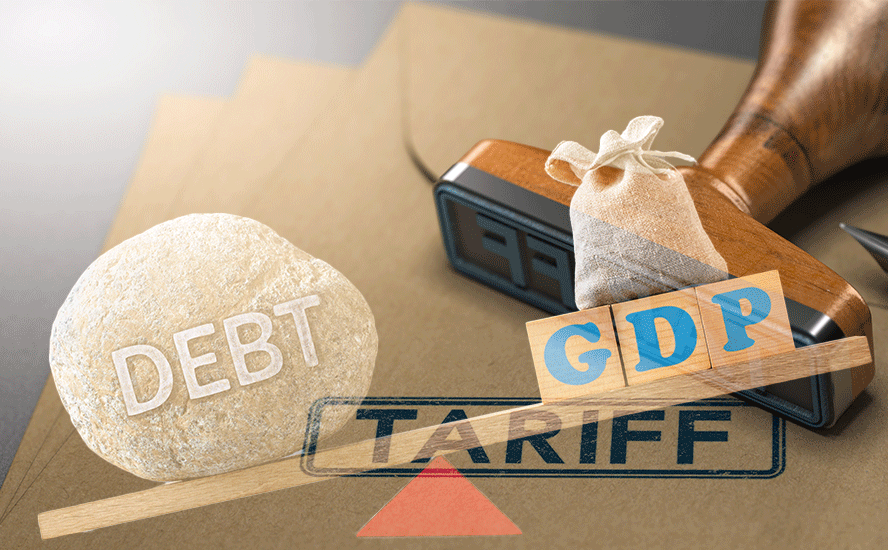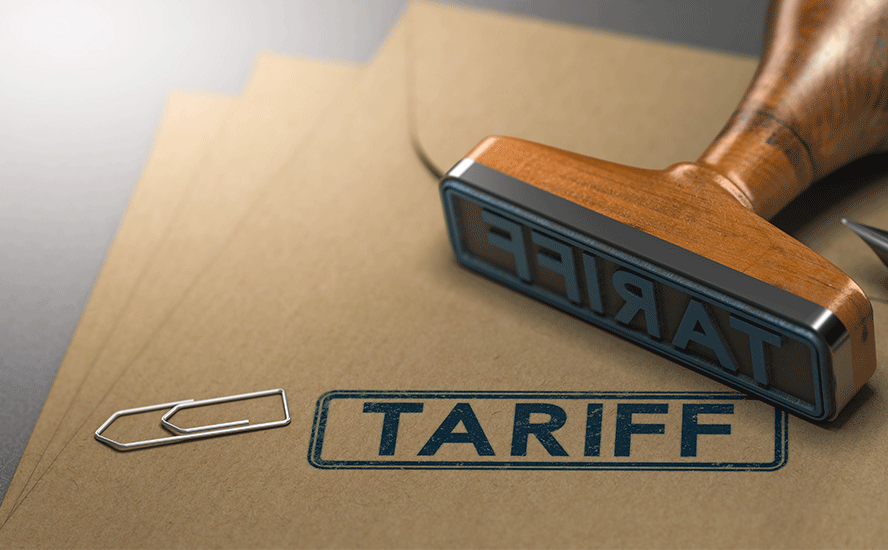Road to a mining ‘yes’ littered with obstacles in Canada

Resource nationalism is the tendency of people and governments to assert control, for strategic and economic reasons, over natural resources located on their territory.
It has been a prevailing theme especially over the last few years as countries experience wider inequality, social unrest and often unsustainable levels of debt. Tapping a wealthy foreign mining company for more profits, or just expropriating the mine and kicking the company out, is often seen as the easiest way to fix a cash crunch, while at the same time appealing to nationalist sentiment.

The most direct method of wresting money or control from a foreign miner is through increased taxation (ie. higher royalties). More indirect approaches are through mandated beneficiation/ export levies and increased state ownership.
Governments may impose steep new export levies on unrefined ores to force mining companies into domestic ore processing. Minerals processed in-country capture more of the value chain as the products achieve higher prices.

Mines are easy targets for expropriation because mining is a long-term investment and one that is especially capital intensive. Mines are also stationary, so companies are at the mercy of the countries in which they operate. Seizure of assets happens using the twin excuses of historical injustice and environmental or contractual misdeeds. Often there is no compensation offered and no recourse. Just ask Crystallex which fought Venezuela for years over a 2008 decision to expropriate its Las Cristinas gold project, finally winning a $1 billion settlement.
For more on this, read our Resource nationalism could further choke metal supplies
There’s another, less familiar form of resource nationalism, the passive-aggressive kind we see in highly developed mining nations like Canada, the United States and Australia. Here, governments are under pressure from environmental, indigenous and anti-development groups to say no to mining.

Unlike poorer nations whose populations need the metals revenue to pay for important social services and to earn hard currency to buy imports, in the rich, developed West, citizens have the luxury of protest. They are comfortable.
Mining is seen by some as a necessary evil whose environmentally destructive practices should be stopped, or at least, shouldn’t take place anywhere near them. They don’t realize or care that without mining, there would be no modern society: no steel to make bridges, no copper wiring that powers homes and businesses, no uranium to fuel nuclear reactors, no jewelry, no rare earths to make smart phones, solar panels, color monitors and TVs. Usually they want resource extraction halted, at all costs – the minerals or the oil kept in the ground.

In Canada these groups, some of which are local, others funded by large philanthropic organizations with millions in funding at their disposal, have the ear of the current government.
In Canada resource nationalism is exercised through the power of Ottawa and the provinces to say ‘no’ to mining. This article explains how governments in Canada are either actively or passively obstructing mining, and making it more expensive for mining companies to operate: legislation such as Bill C-69 and a carbon tax.
Losing our edge
Canada has a prolific mining history. In fact it could be argued that mining is to our economy what hockey is to our culture. Canadians are known for their ability to find, fund and build mines. Some of the biggest mining names are Canadian: Ross Beaty, Pierre Lassonde, Ian Telfer, Robert Friedland.
We had the Klondike Gold Rush that opened up the north – first to grizzled prospectors that toughed it out through brutally cold Yukon winters, then to the first mining companies that displaced the hard-scrabble gold panners with mechanized equipment.
The country is famous for its vast reserves of gold, copper, coal, iron ore and uranium. We are the fifth largest gold producer, but four of the 10 largest gold companies are headquartered in Canada. Many of the world’s junior resource companies are listed on the TSX or the TSX Venture Exchange; most juniors are based in Vancouver.
World-famous area plays include the Abitibi Gold Belt in Ontario/Quebec, volcanogenic massive sulfide (VMS) copper-gold deposits around Snow Lake, Manitoba, Saskatchewan’s Athabasca Basin, and the Golden Triangle in BC.
The Abitibi Greenstone Belt, which stretches from Ontario to Quebec, has produced over 180 million ounces of gold, unparalleled anywhere on the planet except in the gold fields of South Africa.
The Abitibi spawned four of the greatest gold camps in Canada: Timmins, Kirkland Lake, Red Lake and Hemlo.
The Eskay Creek mine in northwestern BC was Canada’s highest grade gold mine and the world’s fifth largest silver producer, with production well over 3 million ounces of gold and 160 million ounces of silver.
While Canada is still known as a mining powerhouse (two provinces and two territories were in the top 10 jurisdictions for mining investment in the latest Fraser Institute rankings), a recent report shows reasons for concern.
The report by the Mining Association of Canada asserts that the country appears to be losing its competitive edge. Among the key findings:
- Over the past five years, Canada has lost ranking for seven out of 16 commodities for which it had been a top-five producer.
- While Canada remained the world’s top destination for non-ferrous exploration spending in 2017, it continued to cede market share to other jurisdictions, including Australia. This marks the sixth consecutive year that Canada’s share of international exploration investment has fallen.
- The value of total projects planned and under construction from 2018 to 2028 has reduced by 55% since 2014, from $160 billion to $72 billion.
- Capital investment in the mining sector has declined each year since 2012, with investment intentions for 2018 in line with this trend.
- Only four new mining projects, all gold mines, were submitted for federal environmental assessment in 2017 – far below highs seen in 2012-2014.
- In 2016, InfoMine, a mining database, reported that Australia’s mining supply sector surpassed that of Canada’s, bumping Canada to third place. In 2017, this gap expanded with Australia adding more than 200 firms to its list. In 2018, Canada was trailing by nearly 800 firms, only adding two firms year-over-year.
“For decades, our industry has been a leader in the production of minerals and metals. A leader in mining services and supplies. A leader in mine finance. A leader in sustainability and safety, but that position is in jeopardy and will be lost without continued, decisive action at both the federal and provincial levels,” Pierre Gratton, chief executive officer of the association, said in the news release.
Bill C-69
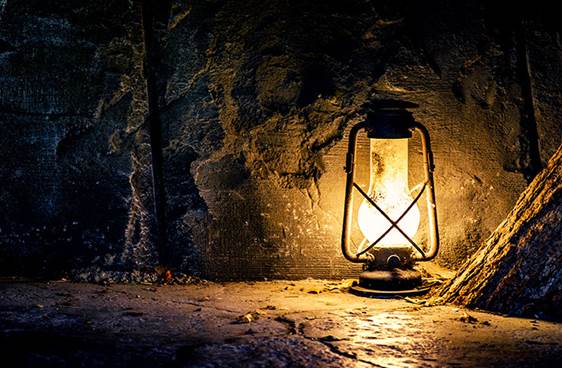
The federal government has introduced legislation to overhaul the Canadian Environmental Assessment Act which has been in place since 2012. The legislation called Bill C-69 has been passed by the House of Commons and is currently under review by the Senate. If promulgated into law, the old act would be turfed and the new one called the Impact Assessment Act.
In summary, Bill C-69 broadens the scope of the assessment process and adds more consultation with the public and particularly indigenous groups.
There is nothing wrong with consultation, in fact it is a necessary part of making changes to the land base given our fractious relationship with First Nations, but this legislation introduces a whole new level of uncertainty to the environmental review process that is critical to the passage of a mining project.
As an industry, mining is so capital-intensive, investors need a great deal of certainty that their money will be safe and offer good returns for years, often decades, from exploration to production to mine closure. Uncertainty keeps capital away, delays add costs to already hugely expensive construction plans.
Tough but fair resource regulation is necessary and expected. Unfortunately, Bill C-69 does nothing to assuage the industry’s concerns that the environmental assessment process is hampering investment in the sector. Here’s Pierre Gratton again, writing in the Globe and Mail:
“Put simply, investment confidence in Canada’s natural resource sectors is in trouble. The politicization of pipelines and a decade of legislative uncertainty regarding the review of natural resource projects lie at the heart of it. This politicization needs to end.”
These are the main reasons the mining industry does and should oppose Bill C-69:
- It imposes a green agenda, new layers of bureaucracy, higher costs, longer delays and uncertainty.
- Among the list of extensive factors to consider, “sustainability” is now a mandatory consideration. Removed from the list is “direct economic consideration” often touted by project proponents.
- Bill C-69 gives the federal environment minister added discretionary power as to whether a project goes ahead or not. The minister can veto a project before the assessment even commences, if its effects are deemed unacceptable. This part of the legislation is worded loosely, with few limits on the minister’s discretion. It is sure to create more uncertainty for proponents.
- The bill contains a clause requiring that new resource projects be scrutinized according to “the intersection of sex and gender with identity factors”. This is identity politics at its most ridiculous.
- According to the Business Council of BC, the proposed law will lead to “greater difficulty securing permits… heightened uncertainty among company managers, project developers and investors.” and help “accelerate outflows of business investment to other jurisdictions”.
- It’s unclear whether the same scientific standards are being imposed for indigenous and non-indigenous groups who will do assessments. The bill enhances the participation of indigenous groups and raises the expectation they will have an effective veto.
- Bill C-69 is expected to extend project review timelines by eight to 10 months, from an already slow four years.
- The new 180-day Planning Phase allows the government to reject a project based only on policy grounds. The government can add 80-day delays almost indefinitely.
- More relaxed rules regarding public input open the door to an influx of poorly informed, politically motivated presentations at public hearings.
- The bill imposes new geographic criteria on greenhouse gas emission standards, effectively taking away provincial authority over natural resource development. Our voluntary commitments to climate change thereby become legal obligations that will hamper mining companies’ competitiveness.
- Newly expanded Designated Physical Activities Regulations could ensnare projects such as potash developments, currently only regulated by the provinces, into a federal environmental review.
Bill C-69 will move us to a situation where the cards are thoroughly stacked against a resource proponent.
Carbon tax
The federal carbon tax means that large industrial facilities, emitting over 50,000 tonnes of carbon dioxide equivalent per year, will be taxed on the CO2 they produce, starting in January 2019. The goal is to reduce greenhouse gas emissions by 80% by 2050.
The tax starts at $20 a tonne and increases by $10 a year until it reaches $50/t.
The tax also grabs fuel companies. By 2022 11.6 cents a liter will be added to the cost of gasoline. Diesel, aviation gas and aviation turbo fuel will also be taxed.
In October the Liberal government in Ottawa said it would levy a carbon tax on provinces and territories that don’t already have one, to be effective on April 1. Currently BC, Alberta, Ontario and Quebec have carbon taxes.
The carbon tax is another way the federal government is discouraging mining in the name of environmental protection – the actual impacts of which are dubious.
In BC, the $35 per tonne carbon tax is touted as being revenue neutral for the government but the problem is it’s not revenue neutral for the mining industry, especially during commodity price downturns. That’s according to Brendan Marshall, the Mining Association of Canada’s vice-president of economic and northern affairs, who notes that corporate tax reductions can help offset exposure to the carbon tax, “but when you’re not making money and operating at a loss, corporate tax breaks are not an effective tool to abate carbon costs or to shield you from carbon leakage.”
The Yukon Chamber of Mines last year implored Federal Environment Minister Catherine McKenna to exempt the mining industry from the carbon tax, saying it will hurt placer miners, exploration companies, hard rock mining operations and prospectors.

A letter to the minister quotes a report saying that “Capital costs for mines built in Canada’s northern territories [are] double for gold mines, 2.5 times higher for base minerals, and operating costs which are 60 percent higher than our southern counterparts,” according to CBC. The letter also notes that placer miners will be particularly hard hit because they have no other options than to use diesel fuel, and warns that increasing costs for the mineral industry in the Yukon will reduce its competitiveness.
As for the tax itself, its effects on global climate change are expected to be so minor, that one has to ask whether the goal is worth the cost of hobbling carbon-intensive industries like mining.
Here is an excerpt from a column by Aaron Wudrick, federal director of the Canadian Taxpayers Federation:
We can start with the Trudeau government’s carbon emissions target for 2030, which would bring Canada’s total annual emissions down from 748 megatonnes (Mt) this year, to 524 Mt by 2030. Assuming we can meet that target — and that’s a big assumption — Canada’s total annual emissions would drop by 224 Mt.
Now consider the biggest contributor to global carbon emissions: China. In 2014, China’s annual carbon emissions were estimated at 10,540 Mt. China is a very large and rapidly developing country. It understandably wants to focus on raising the living standards of its people. Yet, despite strong economic growth in recent decades, the country still has hundreds of millions of people living in relative poverty, especially when compared to more developed countries like Canada. Accordingly, its climate change commitments are less stringent than Canada’s: China’s existing policy will see annual carbon emissions rise to about 13,600 Mt in 2030.
Its annual emissions will thus increase about 3,060 Mt over this period, which means that by 2030, all Canada’s efforts will be cancelled out by just 27 days’ worth of China’s increased carbon emissions. Remember, this isn’t the worst-case scenario; this is if everything goes according to plan. Even if Canadians nobly “do our part” — at a cost of untold billions of dollars for millions of families and businesses — the sum of our efforts will be rendered pointless by the giant Chinese juggernaut in less than a month.
This is a sobering fact, but one worth emphasizing: no matter what Canada does, we’re simply too small a country to have an impact.
Moreover, there are better ways to reduce pollutants than taxing industry. How about Ottawa following BC’s lead, by putting reduction limit dates on emissions from buildings and cars – both major polluters?

The province’s new Climate Plan aims to make new buildings 80% more efficient than current homes and to decrease building emissions by 40%, and cut fuel use by 30% by 2030 by legislating 30% of new car and truck sales be zero-emission vehicles. There’s no stopping electric vehicles, they’re the way of the future, so why not phase out gas-powered cars and build the charging infrastructure to make it easy for people to switch?

Instead of hugely expensive power projects like Site C in northern BC, consider nuclear power. The Site C dam is slated to provide 1,100 megawatts of capacity – enough to power half a million homes. The same goal could be reached by using a thorium-fueled, molten salt reactor capable of delivering 1,000MW. Think about that. One thorium reactor which is safer and produces less radioactive waste than a conventional water-cooled reactor, could take the place of one Site C.
A 1-gigawatt thorium reactor is estimated to cost $2 billion. Site C is slated at $10.6 billion. In other words, you could have five thorium reactors for one Site C.
In 2015 the oil and gas sector produced a quarter of Canada’s total greenhouse gas emissions. Remember methane, the main ingredient of natural gas, is a much more potent greenhouse gas than CO2. Eliminating natural gas from our energy mix would also go a long way towards cleaning up the atmosphere.
But unlike other polluting, NG-intensive industries like the oilsands, LNG and cement, the mining industry doesn’t need a carbon tax to enact changes. Here are just a few examples of how miners are “greening” their operations:
- Teck Resources has a pilot project at its Fording River coking coal operation in southeastern BC. The goal is to reduce fuel costs in its haul trucks by over $20 million a year, by switching from diesel to LNG.
- Teck also has a one-megawatt solar plant running on reclaimed land, at its closed Sullivan mine in Kimberley, BC.
- Goldcorp is converting its Borden underground mine in Chapleau, Ontario to all-electric equipment. The switch is expected to reduce GHG emissions by 7,000 tonnes a year – up to 75% less than would’ve been emitted by standard diesel equipment.
- Glencore’s Raglan mine in Nunavik, northern Quebec, built a three-megawatt wind turbine that saves 2.4 million liters of diesel a year, preventing about 6,000 tonnes of GHGs.
Conclusion
Canada has a long, hugely successful mining history all Canadians should be proud of. Mineral exploration is intensively scientific, takes place in remote, often inaccessible locations, has a high failure to success ratio, and requires capital in the hundreds of millions, sometimes billions. It’s the kind of industry that needs a long and stable investment horizon. It can take 20 years to permit and build a mine in Canada.
For a long time Canada was considered a highly desirable location to sink investment money into mines. Unfortunately our reputation is suffering, due mostly to too many parties getting in the way of mining – an industry that provides three quarters of a million jobs, is the largest employer of indigenous Canadians, and supplies 20% of our exports, while digging up metals essential to a modern society.

There must of course be stringent rules around land use. Not everywhere is appropriate for a mine. Environmental controls must be tight. Nobody wants to see another Mount Polley. Regulations need to be clear. Companies should be transparent with their information. And it’s the government’s role to find the right balance between conservation and development.
Unfortunately, this is not what’s been happening regarding environmental assessments, or what is likely to occur if Bill C-69 passes. It seems awfully incongruent, that between them, the TSX and the TSX-V raise a third of the world’s mining capital equity and Vancouver is the world’s junior mining hub.
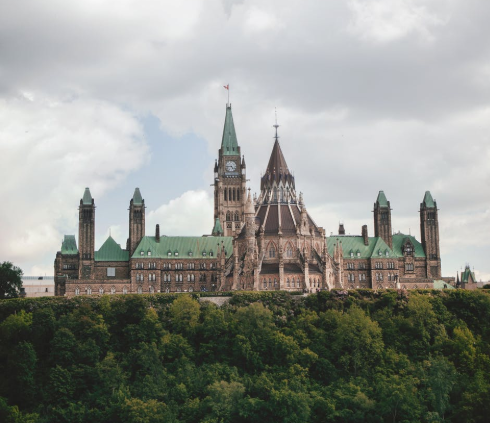
Canadians are known and respected for their mining expertise, yet we have a government that is anti-mining?
Richard (Rick) Mills
Ahead of the Herd Twitter
Ahead of the Herd FaceBook
Legal Notice / Disclaimer
This document is not and should not be construed as an offer to sell or the solicitation of an offer to purchase or subscribe for any investment. Richard Mills has based this document on information obtained from sources he believes to be reliable but which has not been independently verified. Richard Mills makes no guarantee, representation or warranty and accepts no responsibility or liability as
to its accuracy or completeness. Expressions of opinion are those of Richard Mills only and are subject to change without notice. Richard Mills assumes no warranty, liability or guarantee for the current relevance, correctness or completeness of any information provided within this Report and will not be held liable for the consequence of reliance upon any opinion or statement contained herein or any omission. Furthermore, I, Richard Mills, assume no liability for any direct or indirect loss or damage or, in particular, for lost profit, which you may incur as a result of the use and existence of the information provided within this Report.
Legal Notice / Disclaimer
Ahead of the Herd newsletter, aheadoftheherd.com, hereafter known as AOTH.Please read the entire Disclaimer carefully before you use this website or read the newsletter. If you do not agree to all the AOTH/Richard Mills Disclaimer, do not access/read this website/newsletter/article, or any of its pages. By reading/using this AOTH/Richard Mills website/newsletter/article, and whether you actually read this Disclaimer, you are deemed to have accepted it.


